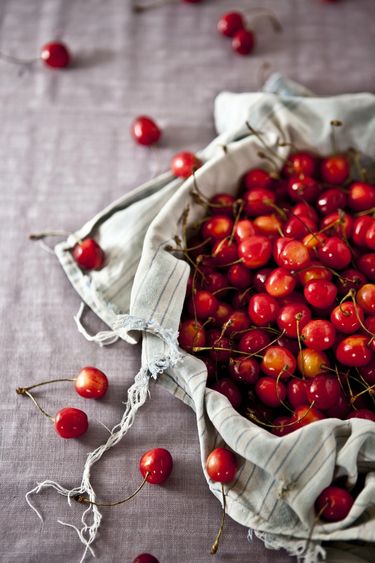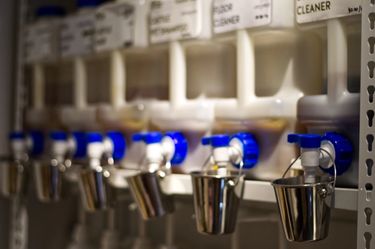If you enjoy this article, or any other content from this website, please subscribe to the newsletter. Your support can make a big difference!
If you’re even just faintly concerned about worldly affairs, you don’t need me telling you that sustainability HAS to be on the agenda. From natural disasters to unsustainable food practices, we’re now more than ever, paying the hefty price for our (industrialised countries) materialistic desires.
For some, climate change is closer to home, with lives being disrupted by a raging fire, a flood or a landslide causing poverty and disease; for others, climate change is not yet as palpable. The danger in treating the climate crisis at a distance is that it isn’t made personal.
The danger in treating the climate crisis at a distance is that it isn’t made personal.
But it should be personal because there's only one earth and plenty of us.

Don't know how to get started with sustainable living?
I suspect that many of you might be coming from a rock and a hard place. To some degree, a lot of us are susceptible to a materialistic lifestyle, where wants trumps needs. And breaking away from that takes a conscious effort.
Consumer choices are made on pre-conceived notions of value. Thankfully, education has created a demand for consumer goods that aim to reduce their detrimental effects on the environment.
Migrating to a more eco-friendly lifestyle may appear limited at first and sacrifices will have to be made. But the path to success can also be taken with gradual, actionable steps that become incorporated into daily life. And these nuggets of wisdom should be shared with loved ones, to encourage them to consider becoming more eco-conscious in everyday life.
I’ve begun to evaluate my lifestyle with the goal of becoming more environmentally sustainable. I would like to share with you how I plan to make sustainability a personal issue.
There are many ways you can make a difference and this post only covers three major areas:
- Making single-use plastic your worst enemy
- Making yourself accountable for flying
- Purchasing produce by the seasons
With that, I give you 21 Steps on how to improve environmental sustainability, no matter where you are in the world.
Please note that some of these links are affiliate links. At no extra cost to you, I will get a little something back if you purchase through my links, which helps to keep this blog going.
Make single-use plastic your worst enemy
Plastic-free July is over but it doesn't mean we should think less about the impact of plastic. If you begin to take a moment to observe what is made of plastic, you’ll begin to notice that its pretty much in EVERYTHING, from our chewing gum to our most coveted jumper.
And what's worse, is the continued use of single-use plastics. These include plastic bags, to-go containers and cutlery, straws, those tiny shampoo bottles at hotels, plastic water bottles, plastic cups, and the packaging on pretty much anything edible.
Imagine if every foot of coastline around the world was stacked with five plastic grocery bags stuffed with plastic trash. That’s the amount of plastic waste that ends up in our oceans each year.
Imagine if every foot of coastline around the world was stacked with five plastic grocery bags stuffed with plastic trash. That’s the amount of plastic waste that ends up in our oceans each year.
Luckily pollution activists like Neil Agius who recently swam 100 km from Malta to Sicily and back to create awareness around the #WavesOfChange campaign to reduce plastic waste in our oceans. Did you know that a single plastic bag can take up to 1,000 years to degrade?
A single plastic bag can take upt to 1,000 years to degrade.
Is paper greener than plastic?
Paper decomposes much more quickly than plastic, making it is less likely to be a source of litter and a risk to wildlife. Paper is also more widely recyclable. But disposable paper cups for hot drinks are not.
A lot of us have made a habit out of buying coffee or tea on the go. But think twice as you're rushing through the day with that non-recyclable paper cup of brew, because these cups are, in fact, coated in plastic to withstand hot liquids. To that, add the infrequency of recycling bins on the road or in the office.

Is it's possible to maintain a zero-plastic trip abroad?
It is. We are most hard-hit when we are travelling in a foreign place as we have more of a tendency to buy plastic-wrapped sandwiches and bottled water if the water isn't potable. Even before we land, we like to take advantage of the airline’s plastic freebies like toothbrushes and headphones which come wrapped in plastic. It is incredibly easy to prepare ahead of a trip, to avoid consuming disposables. More on that below.

How does minimalism help the environment?
When you make a conscious effort to be more mindful of your spending habits and only purchase items you absolutely need, you naturally consume less. By choosing not to buy that T-Shirt is a contribution towards preserving the earth’s natural resources. By doing that, you waste less, especially if the item something that is of lower quality and would deteriorate quickly.
Today, it is arguable that a good number of us can avoid brandishing disposable bottles, cups, and cutlery when reusable bamboo or stainless steel merchandise is available. And if we have an abundance of plastic at home, it's important to re-use this plastic for other purposes such as refilling cosmetic bottles, plastic bags for storing and so on.

Shop from sustainable brands
Sometimes, it's almost impossible to avoid plastic altogether. But you can still make a difference by shopping from brands that care about their environmental impact, from the choice of materials to their methods of production. When making a purchase, it is best to learn more about the values of the brand. Many brands are now choosing to use sustainable materials such as bamboo over plastic or when plastic-use is unavoidable, they reduce their environmental impact by using recycled or upcycled materials. Others donate their proceedings towards charitable causes or apply discounts on their goods if the consumer brings their own reusable container.
Actionable Items: Try to avoid single-use plastic. Here are my tips to be more eco-conscious at home and on the go:
- Stop using plastic straws. If a straw is a must, purchase a portable, reusable bamboo straw instead. Once it's reached the end of its days, place it in your composter.
- Use beeswax wrap instead of plastic wrap. Check out Frank Wrap sold by several stockists in Malta. You'll fall in love with their cute designs. An alternative is BeeNatural Beeswax Wraps and The Little Foxy Workshop.
- Use a reusable stainless steel mug for your hot and cold beverages. This fantastic brand of stainless steel mugs has kept my drinks hot for over 12 hours (so don't try gulp your tea as I did).
- Carry a stainless steel water bottle with you. This brand comes in all colours (we chose white).
- Bring lunch in your own container. I love this bento box together with this bamboo cutlery set.
- Heading out for lunch? Take your collapsible food container to replace a plastic takeaway container. Some cafes/restaurants offer discounts as an incentive.
- Don’t get your groceries delivered unless the company provides you with greener delivery slots as well as the option to pack in boxes instead of plastic.
- Take your own earphones and sleep kit when traveling to prevent the consumption of disposable items on the plane. I love this BAMBOOGALOO set with bamboo toothbrushes, cotton buds and floss although this bamboo charcoal floss deserves its own attention. If you're not big on floss, you could use a bamboo interdental brush
- Prepare a travel kit. Mine includes a natural soap bar, free from palm oils and chemicals, perfect for supporting the no-poo movement which advocates natural over commercial hair shampoo. Check out this gorgeous Sandal Wood Vanilla soap from Soap Cafe Malta. Tuck the bar in a natural fiber soap bag great for exfoliation. For us ladies, these reusable makeup pads are a fantastic alternative to disposable cotton pads. You should also stock up on these fantastic Bamboo Cotton Buds.
- Buy products that take sustainable measures such as recycling and low production impact, like my favourite sports brand Girlfriend Collective. Their leggings, made of used plastic bottles and fishnet, are absolutely fantastic and come in unique colour waves.
Make yourself accountable for flying

All my friends know me as the ‘jet-setter’. In the pre-COVID days, I traveled extensively for business and leisure. Today, I can't help but question my travel bouts, now that I am aware of my moral duty to choose cleaner modes of transport. Did you know that plane engines not only generate CO2 but also generate a host of other "outputs", including nitrous oxide, water vapour and soot?
Did you know that plane engines not only generate CO2 but also generate a host of other "outputs", including nitrous oxide, water vapour and soot?
At flying altitudes, these outputs produce a range of climatic effects. In other words, experts believe that the total impact of a plane is approximately twice as high as its CO2 emissions.
As a rule, taking the train instead of the plane will substantially reduce carbon emissions — perhaps by a factor of five to ten on a domestic trip. However, the benefits will be somewhat reduced as the journey gets longer because long train journeys usually necessitate sleeping onboard. Sleeper cars usually carry fewer passengers than regular carriages, so their emissions per passenger are higher. If, as is common in some countries, the train is powered by diesel rather than electricity, then the emissions will typically be higher still. An old diesel sleeper train traveling a long distance might emit nearly as much CO2 per passenger as a plane.
An old diesel sleeper train traveling a long distance might emit nearly as much CO2 per passenger as a plane.
Nevertheless, even then, the train will typically be greener once you consider the plane's non-CO2 warming effects, but the fact remains that long-haul rail is not by any means inherently eco-friendly.

Unfortunately, almost every long-distance train journey will cost you far more than flying would. Indeed, the difference in price is often so great that for some unavoidable trips it would arguably make sense to take the plane and spend the savings on something more environmentally beneficial than a train ticket, such as insulation at home.
If Flying is the Only Option
In order to make myself accountable for my travels, I sense-checked whether I could have done better if flying was the only viable option. Here is what I’ve learned from my research.
It’s best to take day-time flights
This at least means that any contrails (outputs such as nitrous oxide, water vapour and soot) caused by the plane will reflect some sunlight away from the Earth, in addition to locking warmth into the atmosphere.
Budget airlines and cheaper seats may be more eco-friendly
People often assume that budget flights are somehow less eco-unfriendly than expensive ones.
People often assume that budget flights are somehow less eco-unfriendly than expensive ones.
In fact, the opposite tends to be true. Budget airlines pack more passengers on each flight and typically have younger, more fuel-efficient fleets than longer-established airlines. Significantly, the least eco-friendly tickets are the most expensive — that is business-class and first-class seats.
Significantly, the least eco-friendly tickets are the most expensive — that is business-class and first-class seats.
These seats make the carbon footprint of their passengers three to nine times higher than that of economy passengers.
Traveling light makes flying more efficient
The lighter the load, the less energy the plane will consume. I typically hit 7KG for short summer trips (4-5 days) but it is more challenging to stick to this weight limit in winter; if you have a travel buddy, the best would be to share one larger luggage.
Long-haul flights vs short-haul flights
Whether to prioritise long-haul over short-haul flights remains debatable. It appears that long-haul flights could be more efficient as they fill more seats and churn less CO2 when cruising. Short-haul flights are less efficient because the ratio of take-off and touch-down is higher and that is when most emissions are released.
Nevertheless, long haul flights are responsible for high levels of emissions due to the mileage involved. It is also the case that medium-sized jets tend to be more fuel-efficient, whereas long-haul tend to be larger and heavier planes. In short, there’s no clear winner.
But, there is no doubt that flying direct would be the best option.
Flying direct would be the best option.
Carbon-Offsetting Pros and Cons
I’ve also been reading up on carbon offset programmes and the intended good they bring. These programmes have been around for some years now but are only now starting to become more mainstream due to growing ‘flight guilt’. These programmes collect carbon offset credit donations to support certified carbon reduction projects such as tree-planting to protecting forests and the biodiversity within or creating opportunities for communities to better their livelihoods and health.
There are many such programmes today and a lot of these may not be reputable. There still is a high level of skepticism : the problem with carbon offsetting is that reports have shown that they have failed to deliver "real, measurable, and additional" emission reductions, particularly as these projects only generate an impact on the long-term. On top of that, as major airlines are seeing ‘flight guilt’ affect their market, they are fighting for the claim to be 100% carbon neutral, by offering their own carbon offset programmes.
Until the benefits of projects funded by carbon offset programmes come to fruition, these will remain to be regarded as a dangerous distraction from reduction and as a means of lowering the guilt of frequent flyers, also known as 'greenwashing'. Yet, as the number of flights is projected to grow the one thing that is worse than carbon offsets are not having such programmes.
In other words, carbon offsets can serve some purpose but shouldn’t be seen as our ‘get out of jail card.’
It’s only a small part of a bigger solution. We do actually have to reduce the number of flights we take, until a more sustainable alternative, like biofuels and electric aircraft, are available.
Actionable items: It's clear that the most effective method is to cut down on travel. But if travel is necessary, tips to become more sustainable when flying include:
- Flying with an airline that has a modern fleet — the newer the plane, the more fuel-efficient it is.
- Packing light by reusing clothes during your travels. If finding a laundromat is a challenge consider, carrying a bar of soap to wash laundry in the sink or use Scrubba's portable washbag.
- Choosing an economy seat even when better options are available.
- Flying direct instead of having a layover.
- Offsetting CO2 emissions via globally recognized monitoring bodies like the Gold Standard and the Sustainable Travel International by using their carbon footprint calculator.
Stick to mother nature’s seasons
Aside from being known to be an avid traveler, I’m also known to be a massive foodie. I’ve tried all sorts of food, although I’m now becoming more adept at choosing what I think should and shouldn’t be eaten.

Why is it important to eat food that’s in season?
Seasonal food is fresher and more nutritious than food consumed out of season. This is because seasonal fruits and vegetables produced on local farms are often fresher, as they do not require long distances for transport. Also, unlike out of season produce which is harvested early in order to be shipped and distributed to your local retail store, crops picked at their peak of ripeness are also better tasting and full of flavor. What’s more, studies have shown that fruits and vegetables contain more nutrients when allowed to ripen naturally on their parent plant.
Remember to compost. For advice on how to compost check out this easy guide on composting by The Potager Project.

Why is eating local food important?
Purchasing locally grown foods helps support local farms and maintain farmland and open space in your community.
Local growers can tell you how the food was grown. When you buy directly from farmers, you have the opportunity to ask what practices they use to raise and harvest the crops. When you know where your food comes from and who grew it, you know a lot more about your food.
Are there sustainable restaurants and how do I find them?
There are more and more sustainable restaurants today. These source ingredients from local farmers or grow their own produce and predominantly focus on a plant-based diet. These can also be community-driven restaurants, with profits supporting charities or communities in need. If you're looking for eco-friendly restaurants in Malta, check out Sustainable Eats and Treats.

Actionable Items: I want to make a concerted effort to balance this as much as I can to reduce my contribution to transportation emissions. If I need to shop for goods that have had to come from far away, I will make a conscious decision to seek products that support local communities. For now, the 5 steps I'm taking include:
- Checking the origin of the produce — if it has flown, it's not local.
- Choosing to buy from a trusted local grocery instead of the supermarket
- Taking containers to a zero-waste store like Guide's Spice Corner and ReRoot to stock up on spices and grains. ReRoot has got wonderful sustainable products so you may not just be leaving with grains.
- Plastic-free grocery shopping with a reusable mesh bag. Stores like Zara home also sell fabric net bags as well as eco-stores that provide linen tote bags.
- Following a guide on what is seasonal in my part of the world.
To read more about the negative effects of storing food in plastic, check out Enviromom's post on Plastic Free Food Storage.

How to promote sustainable living
As you can see, it's not that hard to get started with sustainable living. There is one final step (no.21) and that is to spread the word. By sharing this post on social media, you will be encouraging people to rethink the way they consume.
Want to learn more ways to be more sustainable? Visit Eco Market Malta and snag a copy of the E-book '150 tips to lead a more Sustainable Lifestyle'.
